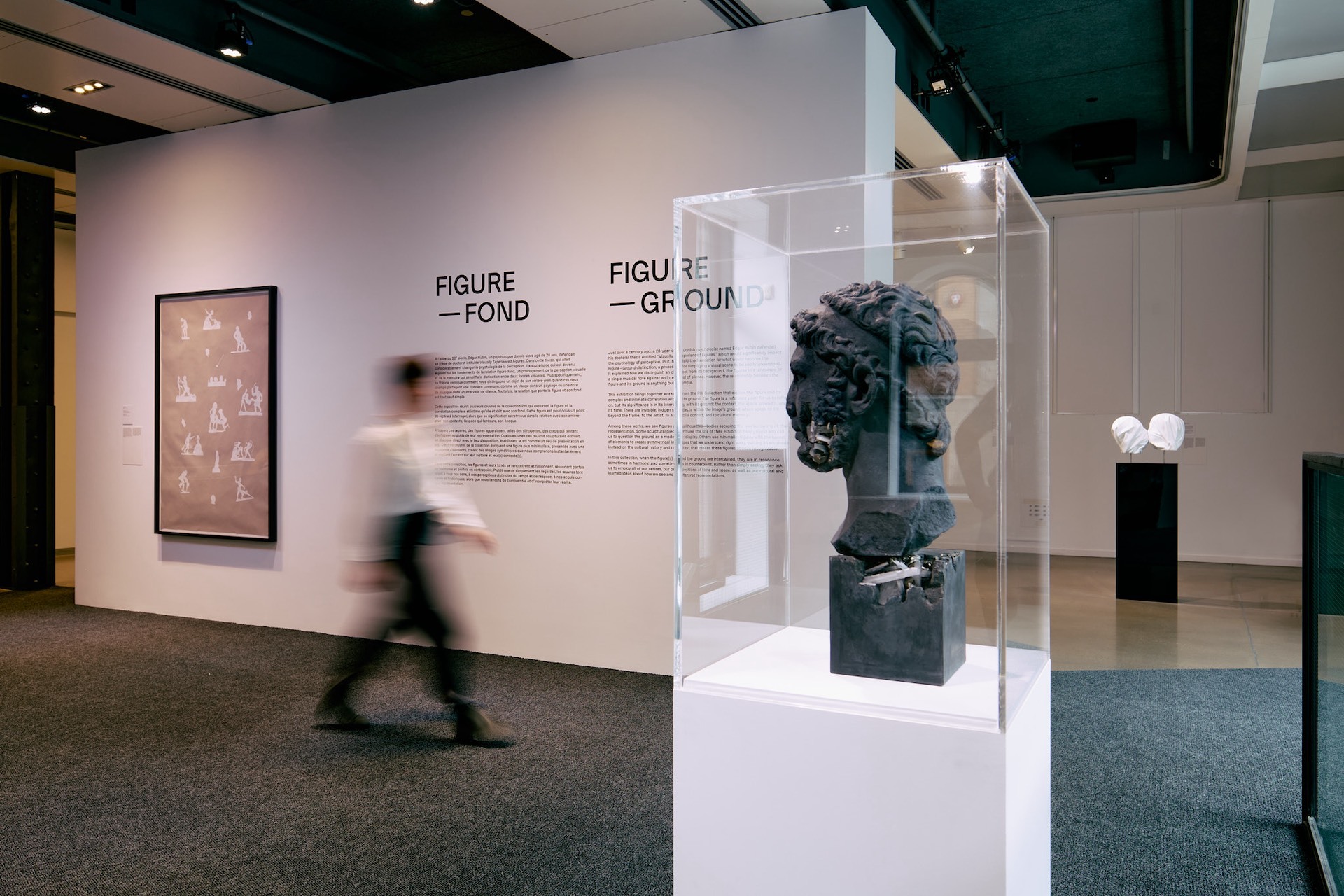
Free
Centre
PHI's art collection
December 15 → June 11, 2023
An ongoing collection of contemporary artworks, accessible and free at the PHI Centre

Ash and Pyrite Eroded Ptolemee - 2019
Volcanic ash, selenite, pyrite, Hydro-stone (gypsum cement)
50.5 × 18 × 21 cm
Collection of Phoebe Greenberg
Blue Calcite Eroded Sarcophagus with Nereids - 2019
Blue calcite, selenite, Hydro-stone (gypsum cement)
62 × 238 × 16 cm
Collection of Phoebe Greenberg
Photo: Vivien Gaumand
Ash and Pyrite Eroded Ptolemee
Daniel Arsham’s contemporary rendering of 1st century mathematician and theorist Ptolemee consists of a traditional bust that has been eroded by pyrite and crystal. The bust itself is created from an ashy matte black plaster that stands in sharp contrast to the crystals flecks of glitter that adorn it. Though Arsham has several other works that similarly cast objects in plaster, this piece uses a classical form rather than modern artifacts to comment on the artist’s notions of “future archaeology.” Despite the sculpture’s depiction of a historical subject, the gold minerals pull the piece into a contemporary sphere, modernizing Ptolomee while at the same time actively contributing to the sculpture’s decay through the physical erosion of the form. By revisiting a classical form in a new light, Arsham explores the intersections between iconography and temporality, questioning the identity of the future relics of our present era. Which contemporary art forms will be fossilized and withstand the test of time? What will future archeologists make of our current artistic environment and the relics of our time? Through his work, Arsham provokes these considerations, the same questions that historians of previous eras may have asked about the art that came before them.
Blue Calcite Eroded Sarcophagus With Nereids
Daniel Arsham’s Blue Calcite Eroded Sarcophagus with Nereids depicts a detailed high relief sculpture including cows, angels, roman pillars, and classical nude figures. Upon first glance, the scene appears to be something out of ancient history, furthered in the intentional weathering of the hydrostone figures to give the illusion of age. However, with a closer inspection one can see that it is not time, but blue calcite and quartz crystals that have eroded the scene, boring holes straight through to the wall in some places. The crystals appear to spread organically across the piece, almost like mold or a piece of paper that has just caught fire. Through Arsham’s careful placement of elements, the hard stone of the sculpture combined with the jagged edges of the minerals creates an image that is shockingly soft. The crystalline erosion emerges naturally, and challenges the solidity of the stone by breaking it down. Arsham’s piece blends the decay of archeological objects with the beauty of glittering crystals, creating an aesthetic image of erosion that begs the viewer to consider the beauty of decay by showcasing a contemporary rendition of an aging relic of the past.
Daniel Arsham’s uchronic aesthetics revolves around his concept of fictional archaeology. Working in sculpture, architecture, drawing and film, he creates and crystallizes ambiguous in-between spaces or situations, and further stages what he refers to as future relics of the present. They are eroded casts of modern artifacts and contemporary human figures, which he expertly makes out of some geological material such as sand, selenite or volcanic ash for them to appear as if they had just been unearthed after being buried for ages. Always iconic, most of the objects that he turns into stone refer to the late 20th century or millennial era, when technological obsolescence unprecedentedly accelerated along with the digital dematerialization of our world. While the present, the future and the past poetically collide in his haunted yet playful visions between romanticism and pop art, Daniel Arsham also experiments with the timelessness of certain symbols and gestures across cultures.
Daniel Arsham's Ash and Pyrite Eroded Ptolemee and Blue Calcite Eroded Sarcophagus With Nereids are currently on view in Figure–Ground, a series bringing together several works from PHI's art collection that explore the figure and the complex and intimate correlation it establishes with its background.

Free
Centre
An ongoing collection of contemporary artworks, accessible and free at the PHI Centre

Free
Centre
An ongoing collection of contemporary artworks, accessible and free at the PHI Centre